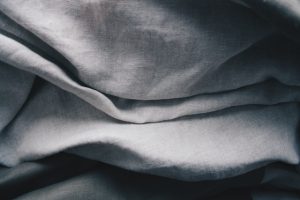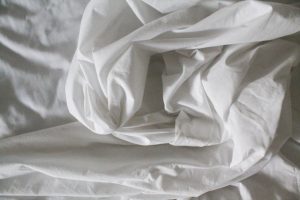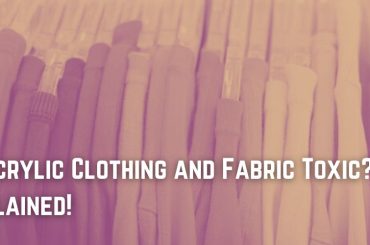First and foremost, modal fiber is microporous. It’s made from the cellulose fibers (wood pulp) of the plant called “modal tree,” which grows in Japan and China under strict regulation.
The modal tree itself belongs to the family of trees called “durian” which can be found practically everywhere except in Africa. The modal tree is also known as “rabamor” or “bathua tree.”
I’m sure you’ve heard the term “activewear” before. But, what exactly is it and why should we wear it when we’re active?
Activewear is clothing that has been specifically designed to handle physical activity, both in terms of performance and style.
The main features of real activewear are breathability, sweat-wicking ability, and elasticity. Modal fabric is an amazing material for creating such apparel because of its many properties.
Modal fiber has an amazing ability to let air pass through it, which makes it perfect for activewear. It’s extremely breathable! This means you’ll never feel drenched in sweat after wearing modal fabric clothes, regardless of how intense your workout may be.
Another cool thing about modal fabric is its great elasticity. Even though the fabric itself might not look very stretchy at first glance, modal fibers are highly flexible and allow for easy movement without impairing the shape of the garment.
Additionally, other than allowing for freedom of movement, wearing modal activewear also ensures that you’ll never have to double-check if your top or leggings are still in place.
It doesn’t even require constant adjusting once it’s been stretched to its maximum extent!
The next great feature of this fabric is its absorbance.
Since modal fiber is a plant product, it has a naturally matte appearance and can be dyed into any color under the sun.
And since it absorbs moisture quickly, there will barely – if any – sweaty spots after working out.

Cellulose fibers like those found in cotton clothes tend to become saturated with sweat and stay wet for long periods of time (which is why they smell so bad after intense workouts). not only does modal fabric let air through, but it absorbs sweat at the same time!
Finally, the modal fabric is also environmentally friendly, just like cotton. The process of generating modal fibers does not involve any harmful chemicals and can be recycled numerous times without losing its quality.
In fact, to add to the list of its benefits, cellulose-based fabrics pose no threat when they are being burned in case you have to dispose of them after damage or a manufacturing mistake.
As far as activewear goes, this means that modal clothing lasts a lot longer than other materials because you don’t have to worry about durability issues due to environmental factors!
If you’re still not persuaded by all these reasons for choosing modal activewear over “regular” clothes made from cotton, linen, or polyester, let me add that modal fabric is also completely hypoallergenic.
It doesn’t cause rashes and never irritates the skin. So if you suffer from skin allergies, it’s a good idea to switch over to 100% modal activewear so you can keep on exercising in complete comfort.
To sum up: Modal fabric is an incredibly versatile material! Not only does it provide us with all the perks of wearing activewear (especially in hot weather), but it has many other practical uses too.
Table Of Contents
- Modal fabric vs cotton: Which is better?
- Is modal fabric toxic?
- Can you sublimate on modal fabric?
- Can you dye modal fabric?
- Modal fabric vs polyester: what’s the difference?
- Is modal fabric stretchy?
- What are some negative properties of Modal Fabric?
- Modal fabric care: how to wash and dry modal fabric?
- What colors does modal fabric come in?
- Are there any health concerns regarding modal fabric?
- How does modal fabric compare to other fabrics?
- Is modal expensive?
Modal fabric vs cotton: Which is better?
Whenever you need to buy new clothing or activewear, one of the first questions that comes up is whether to go with natural fabrics like cotton, linen and silk or synthetic ones like polyester and nylon.
Cotton is a natural fabric that’s made from the seeds of the cotton plant, while modal fabric is a man-made fabric created from wood pulp.
While it might sound like they’re both impressive materials, some are better than others for specific uses.
So which one should you choose?
When it comes down to it, there are three main factors to consider: comfort, durability, and absorption.

Cotton scores top marks on two of the key areas –it absorbs sweat well and feels good against the skin –but falls down on durability. On the other hand, modal fabric scores well for comfort and absorption but isn’t as strong as cotton.
When it comes to activewear, both types of material have their strengths and weaknesses, depending on what you’re looking for.
Cotton is perfect for yoga class because it’s stretchy enough to allow your movement without putting too much strain on the fabric or your skin.
However, if your favorite sport is something more energetic like aerobics, it might be worth sticking with synthetic fabric.
Modal fabric falls into this category because it’s highly absorbent which means you can dry off faster by hanging up your leggings after a sweaty workout. And because it’s so lightweight, you’ll hardly feel like you’re wearing anything at all
- Cotton is a natural fabric that’s made from the seeds of the cotton plant, while the modal fabric is a man-made fabric created from wood pulp.
- Cotton scores top marks on two of the key areas –it absorbs sweat well and feels good against the skin –but falls down on durability. On the other hand, modal fabric scores well for comfort and absorption but isn’t as strong as cotton.
- Both types of materials have their strengths and weaknesses, depending on what you’re looking for.
The question ” Which is better? modal or cotton ” has no answer. Both materials have their strengths and weaknesses depending on what you are looking for.
To help make the decision easier whether to buy cotton or modal fabric activewear, you can take into consideration three main factors: comfort, durability, and absorption.
Cotton absorbs sweat well and feels good against the skin but loses its strength over time because of that; on the other hand, modal fabric scores well for both properties but isn’t as strong as cotton.
Both materials may have their strengths and weaknesses depending on what your purpose is for your activity, so you might want to know more about them before buying new ones!
Is modal fabric toxic?
Modal fabric is not toxic. Although it’s derived from the wood pulp of a tree, modal fabric has gone through thorough purification processes to ensure that there are no toxins in the final product.
It can be safely worn next to skin, and should not cause any irritation or adverse reactions when used properly.
Although some people have allergic reactions to natural fibers like cotton or silk, these people will not necessarily react badly to modal fabric.
People who are extremely sensitive might want to test out the garment by wearing it for short periods at first before committing to an extended wear time.
Can you sublimate on modal fabric?
Yes, modal fabric can be sublimated.
Can you dye modal fabric?
Another great property of modal fabric is its ability to absorb dye very easily without bleeding or fading. Because of this, the dyed color will remain vivid for a long time and won’t fade even after repeated washing.
Modal fabric vs polyester: what’s the difference?
Modal fabric and polyester are two very different fabrics with their own set of pros and cons. Modal is a natural fiber derived from wood pulp, while polyester is man-made and comes from oil.

On the positive side, modal is lightweight and breathable, it absorbs moisture without feeling wet, and has great shape retention. On the other hand, most modal garments have to be dry-cleaned because they shrink so easily in water. Since most commercial dry cleaners aren’t environmentally friendly, this can be a problem for those who’d like to avoid chemicals as much as possible.
Is modal fabric stretchy?
Modal is very stretchy. It’s similar to spandex in that it has almost double the stretchiness than cotton, making it great for creating form-fitting activewear. Because of this, modal fabric can be used to create yoga pants and other garments where stretchiness is needed.
What are some negative properties of Modal Fabric?
Although modal fabric is highly recommended for activewear and underwear, there are a few negative aspects you need to know before buying. Firstly, modal shrinks very easily in water, so if you are planning on washing your garment in the shower or bathtub, be sure to buy one size larger than usual.
Also, remember that it’s best not to use hot water when washing your garment because that will cause even more shrinkage.
Secondly, modal absorbs dye very quickly which can have negative effects if you don’t prepare it first. Dyeing the fabric may cause some of the fibers to lose their elasticity and become weaker, especially along the seams. Because of this, it’s commonly advised by dye experts that you should always pre-wash your modal garment before dyeing it.
Modal fabric care: how to wash and dry modal fabric?
Fortunately, washing and drying your modal garment is straightforward.
Washing machine: If you’re okay with shortening the life of your garment, then go ahead and toss it in the washer! Wash it inside out on gentle cycle or hand wash cycle using cold water. Note that even though modal is machine washable, it’s not dryer safe, so you’ll have to hang your modal garment on the line to air dry.
Dryer: Modal fabric tends to shrink more in the dryer than in the washer, so we recommend hand washing and hanging up to dry whenever possible.
However, if you must use a machine, be sure to set the temperature on low and check on the garment early and often while it’s drying so you can remove it when needed.
What colors does modal fabric come in?
Modal can be easily dyed so you can get any color you want!
Are there any health concerns regarding modal fabric?
Modal is completely free of chemicals, so it’s 100% safe for anyone who wants eco-friendly activewear. There are no negative effects on the skin whatsoever, and if anything it will feel much more luxurious than cotton! You can also be sure that their products did not contribute to deforestation or toxic water pollution at all.
How does modal fabric compare to other fabrics?
In general, modal fabric is significantly softer than cotton, but it’s also less durable. However, modal can draw moisture away from your skin 3 times faster than cotton, which means that you’ll stay cooler and be more comfortable when working out in the heat.
Is modal expensive?
Modal is more expensive than most fabrics, it will ultimately save you money because of how much longer it lasts!

I am the founder of In The Fashion Jungle, A site that aims to bring the latest trends and fashion news to our readers. I have extensive experience in the fashion industry, having worked in fashion manufacturing, production, and quality control for many years.
My passion for fashion began at a young age, and I pursued a degree in fashion design to further hone my skills. After graduation, I worked with several well-known fashion brands, where I gained valuable experience in all aspects of fashion production.
Over the years, I have developed a keen eye for fashion trends and have a deep understanding of the manufacturing process. This has allowed me to successfully launch my own fashion site, where I can share my knowledge and expertise with others who are passionate about fashion.
Through my site, I hope to inspire others to express themselves through fashion, whether it be through clothing, jewelry, or accessories. I believe that fashion is a form of self-expression and that everyone should have the opportunity to feel confident and stylish.
Thank you for taking the time to learn more about me and my passion for fashion. I look forward to sharing my insights with you through my site.

